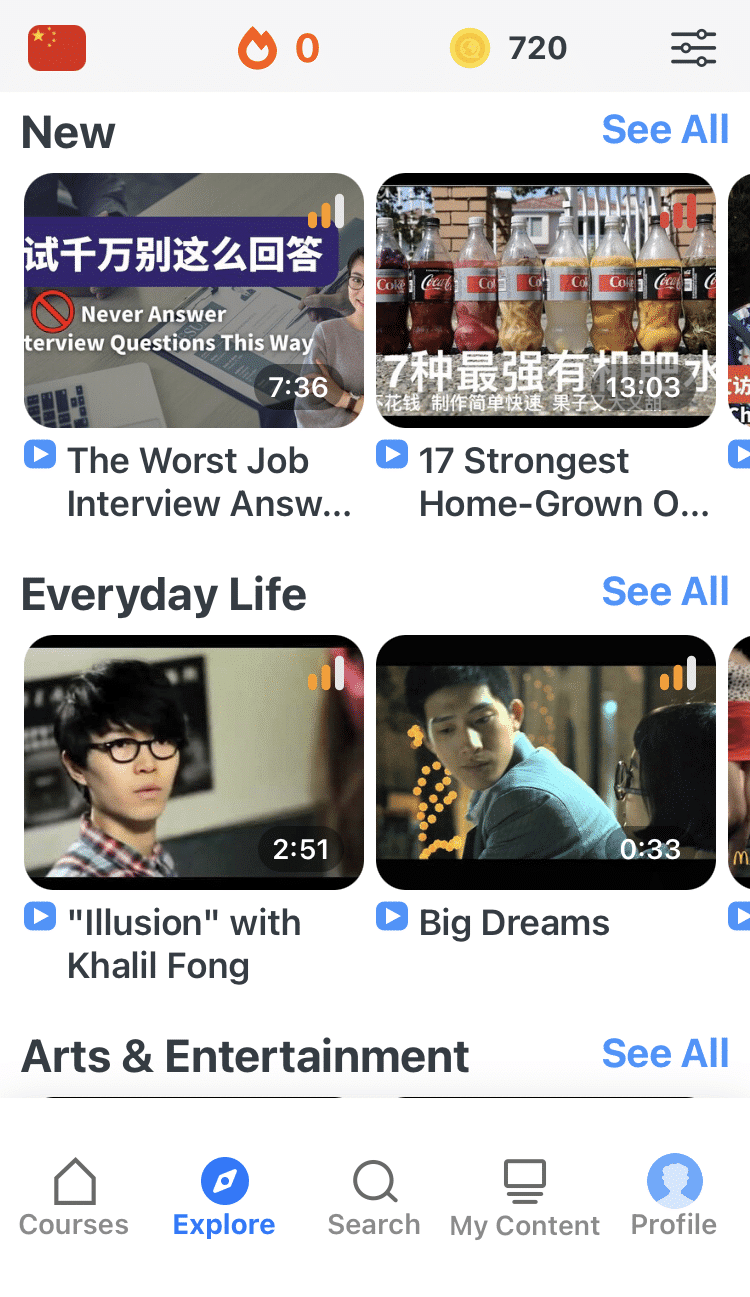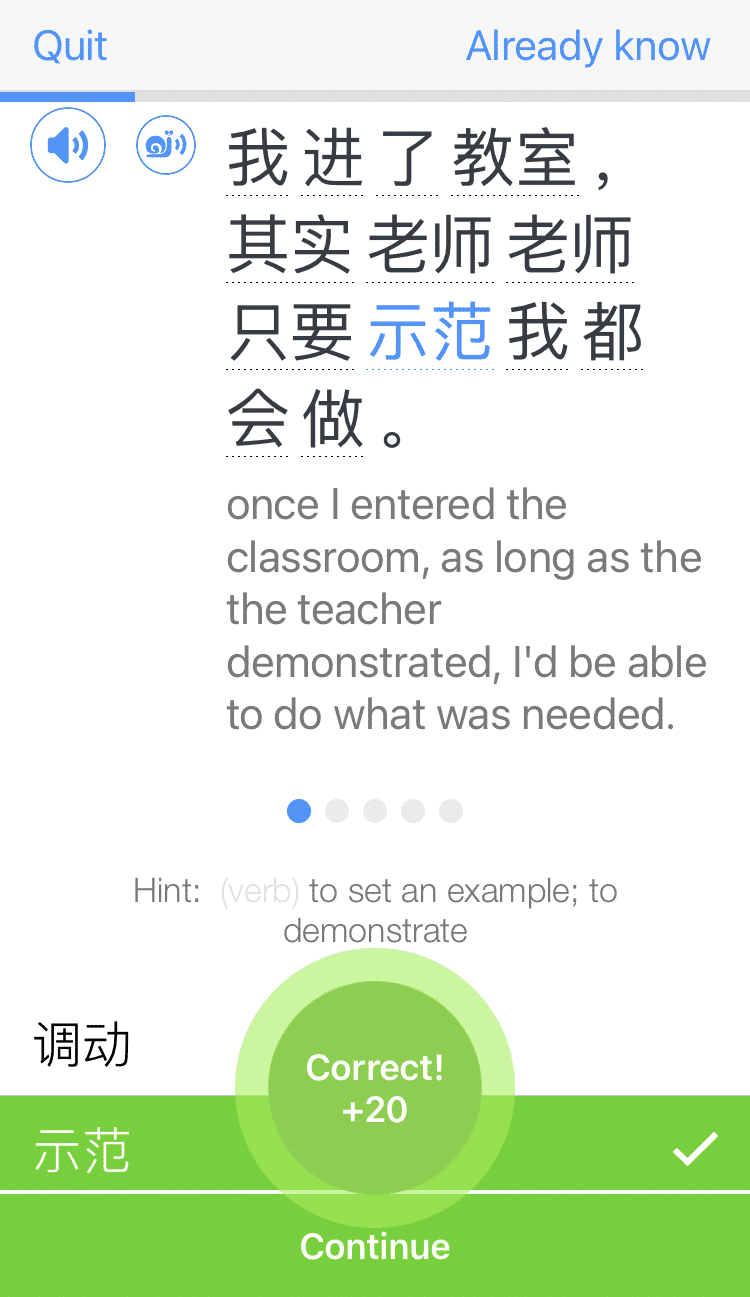Contents
- 1. Break the characters down into radicals or components
- 2. Create visualizations to remember characters
- 3. Use pinyin in your creative visualizations
- 4. Learn the tones and associate them with moods or colors
- 5. Rely on familiar characters and build from previous knowledge
- 6. Keep practicing mnemonic techniques with new characters
- 7. Watch authentic videos with Chinese subtitles
- 8. Read parallel texts to see characters in different contexts
- 9. Practice handwriting characters
Learn Chinese Characters: 9 Tricks to Effectively Remember Hanzi

Are you looking for some simple and effective ways to learn Chinese characters?
There are tons of methods out there that you can try adding to your language learning routine.
Here, we’re going to explore some creative tips for learning and memorizing Chinese characters.
Download: This blog post is available as a convenient and portable PDF that you can take anywhere. Click here to get a copy. (Download)
1. Break the characters down into radicals or components
In each Chinese character, there are often components that have individual meanings, known as “radicals.”
Radicals are basic characters that can’t be simplified any further. They often define a broad category, giving either phonetic or semantic clues, and are also used as an index to look up words (like the first letter of a word in English dictionaries). Radicals can combine to create more complex characters.
Some characters can also be found within a more complex character. These are known as component characters.
Knowing the radicals and the meanings behind them will at least give you an element of a character when trying to memorize it.
Some radicals resemble a drawing of the thing they represent because they were originally pictographs. This can make it easier to remember the meanings of these radicals, as well as the meanings of characters that contain those radicals.
Here are three examples:
木 (mù) — wood
斤 (jīn) — ax head
日 (rì) — sun; day
Now, if we combine the first two characters 木 and 斤, we have a new character: 析 (xī), meaning “to separate.”
If you think about “wood” combined with “ax,” it’s easy to see how that can relate to the idea of “separation,” which is one way you could describe chopping wood.
This leads us to the idea of using this imagery to form associations between the characters and their meanings.
2. Create visualizations to remember characters
Using a component-focused mnemonic technique, we can create a strong association between 析 and its component characters.
In our memories, we can combine this character with the idea of someone hitting the wood with an ax, separating pieces of wood.
There are also more complex character pairings or words that include this character for “separate.”
For example, there’s 分析 (fēn xī), meaning “to analyze.”
The word for “analyze” could be remembered by visualizing a cut tree and the rings inside the tree, which are used to analyze the tree’s characteristics.
Creating imaginative visualizations can lead to more effective learning. The next time you see this character, you’ll be able to break it down and recall its meaning. The more vivid your visualization, the more effective the technique will be.
3. Use pinyin in your creative visualizations
When you learn a character, you need to know more than its general meaning—you also need to learn how to say it out loud.
Once you understand how tones and sounds work in Mandarin, pinyin (or the Chinese pronunciation guide in the Roman alphabet) will provide a guide to pronouncing the syllable.
Luckily, similar mnemonic techniques relating to association and visualization can be applied to remembering pronunciations.
With some imagination, we can also associate the pronunciation of the character with the visualizations we have created.
For example:
- The pinyin of 木 is mù. To put these two concepts together, we can imagine a tree that says the word mù, scaring hikers that pass by.
- For the character 斤, we can imagine an ax being sharpened and making a jīn sound when it is placed against the whetstone.
- For 析, we can imagine an ax cutting the tree in bright sunlight, with each cut making a xī sound as it strikes the tree.
Sounds kind of silly, right? You would be surprised, but the sillier the story is the better you will remember the pronunciations.
As you continue to study Chinese, you will likely find these mnemonics less and less necessary. You will start to recognize the characters and sounds thanks to hearing and reading them in context repeatedly.
4. Learn the tones and associate them with moods or colors
Once you have the basic pronunciation down, you need to make sure you know what tone to use. If you need a primer on this topic, check out this advice on learning Chinese tones.
Once you understand the tones themselves, you can start finding ways to memorize the tones of the characters you learn.
There are two methods for remembering the tone of the character.
The first method uses tones as a way to set the mood of the visualization. We start by classifying tones into four major types. Remember that these are arbitrary classifications and are only suggestions. You are welcome to create your own personal associations with each tone.
- First tone: Smooth, conveying a feeling of wholeness and inner peace. If the Chinese character is read in this tone, the whole visualization takes a tranquil mood.
- Second tone: Goes up, rising, representing heavenly paradise. With the second tone, the visualization can take on a mood of happiness or reverence.
- Third tone: Down and then up. In these visualizations, the mood can be one of emotional agitation or turbulence.
- Fourth tone: Goes down. The mood in these final visualizations can take on a melancholy or sinister mood.
Let’s test this method with the character 斤.
The pinyin for this character is jīn, which falls under the first tone. To remember the tone, you can visualize a man named “Jin” taking on the first mood by swinging the ax with a look of inner peace on his face. This helps us remember the pronunciation and tone.
The second method uses colors. Different colors correspond to different tones. These connections are all subjective as well, so go ahead and form your own color associations.
- The first tone represents tranquility and wholeness, so you can visualize a pure white hue.
- The second tone represents goodness and paradise, so Chinese characters with this tone can take on a bright yellow shade.
- The third tone is turbulent, and the visualizations could thus have many vibrant colors clashing.
- The fourth goes down, so the visualizations can take on darker shades.
Let’s expand on the visualization of 木 as an example. The pinyin for this character is mù, in the fourth tone. Our previous visualization had a talking tree scaring hikers, but now let the visualization take place on a dark cloudy night without the moon in sight.
5. Rely on familiar characters and build from previous knowledge
Once you start being able to consistently remember radicals like the ones above, you’ll start recognizing them inside other characters. This will help you remember the meaning.
For example, when you look at the character 晰, you might notice that it’s made up of 日 and 析. In very old literary Chinese, 晰 means “clear” and, by extension, “easy to understand.” In modern Chinese, it is used in the word 明晰 (míng xī), meaning “lucid.”
As you learn more Chinese characters, you will start to recognize some patterns. Often, characters with similar components will have similar pinyin structures. Instead of adding pinyin to the visualization, you can just borrow pinyin from other related characters.
For example, we can take the character we discussed previously: 析.
晰 and 析 share the same pinyin, xī. In this case, we do not have to add to the previous visualization from before. All there is to do is to look at 析 and remember that the pinyin is the same. And as you learn more characters, more patterns will start to emerge.
6. Keep practicing mnemonic techniques with new characters
If you are new to using mnemonic techniques for character memorization, here are three additional practice examples to help you become familiar with these strategies.
松 (sōng) — pine tree
Radicals: 木, 公 (gōng) — public
To remember the meaning of this character, picture a public event with people standing around a large tree.
The tree is a pine tree, and they are singing a song (so you can remember the pinyin). In the spirit of the first tone, the mood is peaceful and tranquil. The whole scene is bathed in white (perhaps it’s snowing).
闪 (shǎn) — flash
Radicals: 门 (mén) — gate, 人 (rén) — man/person
For this character, picture a man standing in front of a gate. You close your eyes and he is gone in a flash. It turns out he has shanked someone (shanked helping you to reinforce shǎn) and is on the run. As it is the third tone, emotions run high as people try to find this man, and the colors in the scene are plentiful and vibrant.
迪 (dí) — enlighten
Radicals: 辶 (chuò) — go, 由 (yóu) — from
Imagine you are going on an endless path, one you have always been walking on. Then, all of the sudden, you start to wonder where the path came from. Picture yourself looking toward the start of the path. By examining the path, you become enlightened.
For the pinyin, visualize the road going back and back, and the start being Disney World (for the dí sound). Since it’s the second tone, picture yellow light around Disney World, which is situated high in the clouds and is giving warmth and happiness to all.
7. Watch authentic videos with Chinese subtitles
If creative visualizations don’t work for you, another way to get familiar with Chinese characters and their pronunciation is to watch Chinese media. Mandarin Chinese TV, movies and other videos with Chinese subtitles are best since they provide visual and audio cues that make memorization easier.
Because you’ll be watching these TV series and movies with a purpose and not purely for entertainment, feel free to break the videos into sections. It’s pretty intimidating going through an entire movie in one go, especially if you’re not familiar with a lot of characters.
I suggest starting off with a half-hour TV show or short video, pausing at any moment to write down a character or term you don’t recognize and writing their definitions.
Online platforms, like YouTube and other streaming sites, make Chinese videos quite accessible. However, these won’t always come with accurate subtitles.
The FluentU program has native Chinese videos with expert-created subtitles and other embedded learning tools.
FluentU takes authentic videos—like music videos, movie trailers, news and inspiring talks—and turns them into personalized language learning lessons.
You can try FluentU for free for 2 weeks. Check out the website or download the iOS app or Android app.
P.S. Click here to take advantage of our current sale! (Expires at the end of this month.)
You can review material with custom flashcard decks and personalized quizzes, which challenge your reading, writing (typing), listening and speaking abilities. By working on all these skills simultaneously, you’ll have an easier time forming connections with Chinese characters, ultimately improving your ability to recognize and remember hanzi.
8. Read parallel texts to see characters in different contexts
If you want to remember words, you have to see them being used in everyday settings.
If you want to explore beyond regular textbooks and literature, make sure you look for parallel texts, which are books with hanzi, pinyin and English all together.
Having the English translation is super handy, as it allows you to read the passage without having to reach for a dictionary or a translator app. And the pinyin will help you remember the pronunciation as you read.
Just do a quick search of parallel texts, and you’ll see that you have a wide range of literature to choose from, such as collections of short stories and compilations of poems. Penguin Random House also has a parallel text series, with short stories by both emerging and well-known authors.
9. Practice handwriting characters
You can use all the memory techniques above, but you have to write with a pencil and paper if you want to feel the flow of a written character. The more you write, the more natural the process becomes.
Use the stroke order rules to help you memorize Chinese characters. Top to bottom, left to right, inside and then out—the rules are logical. Learning them will make it miles easier when practicing characters and tackling new characters.
Worksheets are especially helpful for writing practice, and you can make them yourself using web resources like Hanzi Grids. This will also let you customize your own writing practice to focus on the characters you need to work on most.
You can also practice writing by using mobile apps such as Chinese Writer to incorporate games into your writing practice. These games track your progress and prioritize your common mistakes in the next level or activity.
You could even sign up for a Chinese calligraphy class to get some hands-on experience drawing the characters with actual brush strokes. This adds fun and creativity to your character studies, and the tactile experience of using the brush will reinforce your memorization even further.
Don’t ever feel limited by these techniques. They are just suggestions and quite subjective. Your personal experiences, creativity and interests will help you shape your own personal style in learning and remembering Chinese characters.
Memory aids do not work unless they manage to stick in your brain—so do whatever works for you!
Download: This blog post is available as a convenient and portable PDF that you can take anywhere. Click here to get a copy. (Download)
And One More Thing...
If you want to continue learning Chinese with interactive and authentic Chinese content, then you'll love FluentU.
FluentU naturally eases you into learning Chinese language. Native Chinese content comes within reach, and you'll learn Chinese as it's spoken in real life.
FluentU has a wide range of contemporary videos—like dramas, TV shows, commercials and music videos.
FluentU brings these native Chinese videos within reach via interactive captions. You can tap on any word to instantly look it up. All words have carefully written definitions and examples that will help you understand how a word is used. Tap to add words you'd like to review to a vocab list.
FluentU's Learn Mode turns every video into a language learning lesson. You can always swipe left or right to see more examples for the word you're learning.
The best part is that FluentU always keeps track of your vocabulary. It customizes quizzes to focus on areas that need attention and reminds you when it’s time to review what you’ve learned. You have a 100% personalized experience.
Start using the FluentU website on your computer or tablet or, better yet, download the FluentU app from the iTunes or Google Play store. Click here to take advantage of our current sale! (Expires at the end of this month.)
















